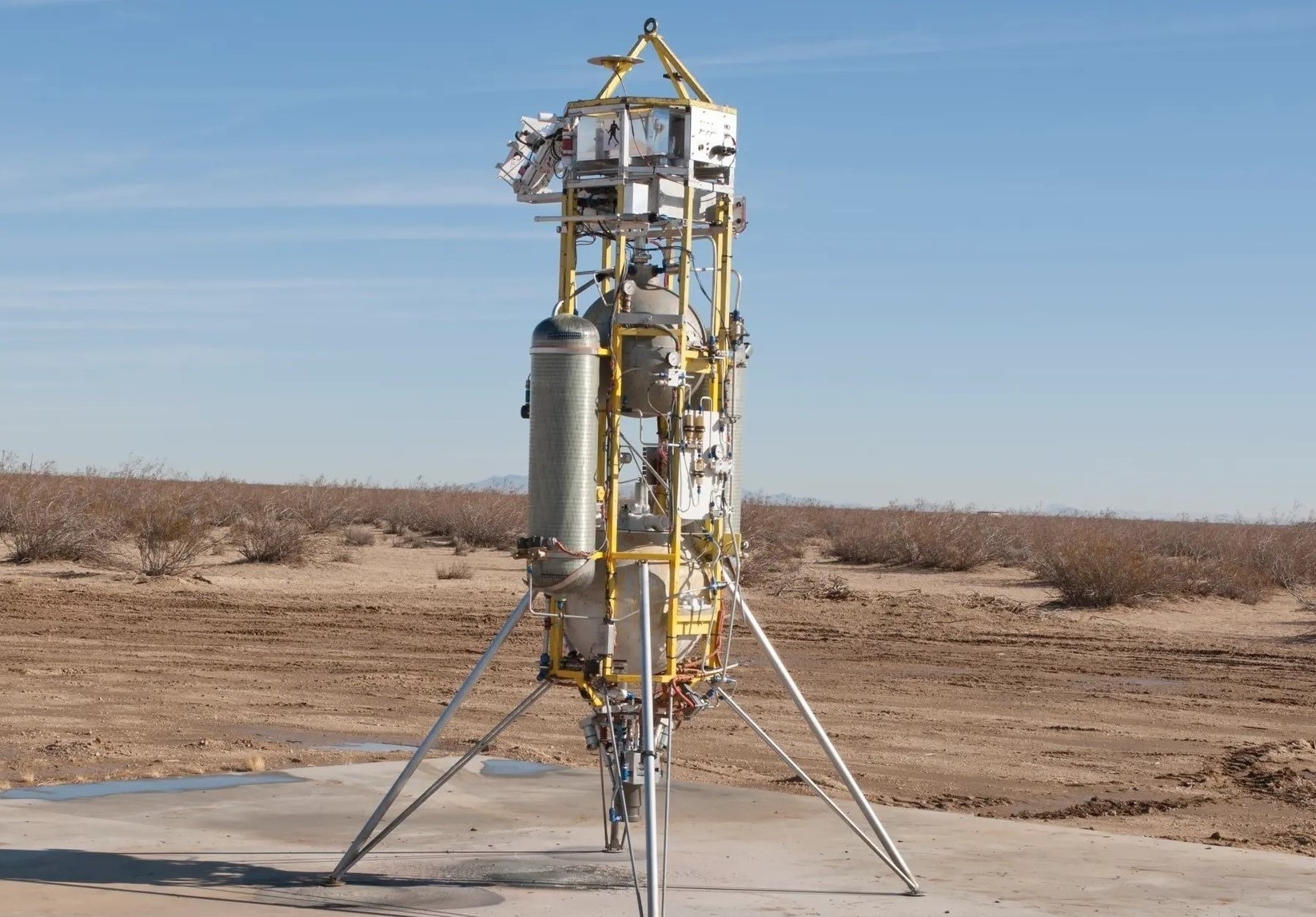
Space exploration has always captivated us, pushing the boundaries of human knowledge and opening new frontiers in our understanding of the vast Universe. One crucial aspect of space exploration is the use of planetary landers, robotic spacecraft designed to carefully touch down on the surface of celestial bodies like planets and moons. These remarkable machines have played a vital role in gathering scientific data, providing us with invaluable insights into the worlds beyond our own. In this article, we will explore eight astounding facts about planetary landers, shedding light on their capabilities, achievements, and the fascinating discoveries they have made. So, buckle up and get ready to embark on a journey through the cosmos as we dive into the world of planetary landers!
Key Takeaways:
- Planetary landers are like brave explorers, venturing to other worlds to search for signs of alien life and withstand extreme conditions, expanding our understanding of the universe.
- Equipped with advanced instruments, planetary landers provide precise landings and capture stunning images, pushing technological boundaries and deepening our appreciation of the cosmos.
Planetary Landers Explore Other Worlds
Planetary landers play a crucial role in our exploration of the universe. These remarkable spacecraft are designed to safely touch down on the surfaces of other planets, moons, or celestial bodies, allowing us to gather valuable data and conduct various experiments in extraterrestrial environments.
Planetary Landers Are Sent to Discover Alien Life
One of the primary missions of planetary landers is to search for signs of alien life. Equipped with sophisticated instruments, these spacecraft analyze the composition of the atmosphere, soil, and rocks to detect any traces of organic matter or chemical elements that could indicate the existence of life beyond Earth.
Planetary Landers Withstand Extreme Conditions
Surviving in hostile environments is no easy task, but planetary landers are built to withstand extreme conditions. From scorching temperatures to bone-chilling cold, these robust spacecraft are engineered to operate in environments with harsh climates, such as the frigid surface of Mars or the blistering heat of Venus.
Planetary Landers Carry Advanced Scientific Instruments
Equipped with a variety of advanced scientific instruments, planetary landers enable us to conduct detailed studies of other worlds. These instruments can measure atmospheric conditions, analyze rock and soil samples, study the presence of water, and even study seismic activity, providing valuable insights into the geological makeup and potential habitability of other celestial bodies.
Planetary Landers Provide Precise Landing Capabilities
Accurate and precise landing is critical for the success of a planetary mission. Landers are equipped with state-of-the-art navigational systems and landing gear to ensure a safe touchdown on the target surface. With advanced guidance systems and thrusters, they can compensate for the atmosphere, gravitational pull, and surface conditions, allowing for safe and controlled landings.
Planetary Landers Enable Remote Exploration
Planetary landers act as our eyes and ears in the far reaches of the solar system, providing valuable data and imagery of other worlds. Through high-resolution cameras and imaging systems, they capture breathtaking photographs, allowing us to study the geological features, landscapes, and even weather patterns of distant planets and moon.
Planetary Landers Expand Our Understanding of the Universe
By exploring other worlds, planetary landers contribute to our understanding of the universe. They help us unravel the mysteries of planetary formation, study the potential for habitability beyond Earth, and provide vital data for future manned exploration missions. The knowledge gained from these missions paves the way for scientific advancements and deepens our appreciation of the vastness and diversity of our cosmos.
Planetary Landers Push Technological Boundaries
The development of planetary landers requires cutting-edge technology and innovation. Engineers and scientists continuously strive to improve the capabilities of these spacecraft, from developing more efficient propulsion systems to designing enhanced landing mechanisms. Each mission presents new challenges that push the boundaries of our technological capabilities.
Conclusion
Planetary landers have revolutionized our understanding of the solar system by providing us with valuable data and insights about other celestial bodies. From the moon to Mars and beyond, these incredible machines have defied gravity and captured our imaginations. With their advanced technology and determination, planetary landers have successfully explored unknown terrains, gathered samples, and transmitted valuable information back to Earth.
As we continue to push the boundaries of space exploration, planetary landers will play a crucial role in unlocking the mysteries of the universe. From searching for signs of life to studying the geological history of other planets, these extraordinary inventions hold the key to expanding our knowledge and pushing the limits of human exploration.
So the next time you look up at the night sky, remember the incredible feats of planetary landers, and the invaluable contributions they make in our quest to unravel the secrets of the cosmic neighborhood.
FAQs
1. How do planetary landers reach their destination?
Planetary landers are typically launched aboard rockets or spacecraft. They are built with precise navigation systems and propulsion systems that allow them to travel through space and arrive at their target destination.
2. How do planetary landers withstand the harsh conditions of other planets?
Planetary landers are designed to withstand extreme temperatures, atmospheric conditions, and rugged terrains. They are equipped with advanced heat shields, insulation, and sturdy structures to protect their electronic instruments and scientific payloads.
3. How do planetary landers gather data and transmit it back to Earth?
Planetary landers are equipped with a variety of sensors and scientific instruments to collect data on the composition, geology, weather, and other aspects of the planetary surface. They use antennas and communication systems to transmit the collected data back to Earth via radio signals.
4. Have any planetary landers discovered signs of extraterrestrial life?
As of now, no planetary lander has discovered definitive evidence of extraterrestrial life. However, they have provided valuable insights and clues that suggest the possibility of life or its potential for sustaining conditions on other planets.
5. How long do planetary landers stay operational?
The operational lifespan of a planetary lander depends on various factors such as power supply, mission objectives, and environmental conditions. Some landers have operated successfully for a few months, while others have exceeded their expected lifespan and continued to operate for several years.
6. Are there any upcoming missions involving planetary landers?
Yes, there are several upcoming missions planned by various space agencies and organizations. These missions aim to explore different planets and moons in our solar system, including Mars, the Moon, and some of Jupiter and Saturn’s moons.
7. How do planetary landers navigate on other planets?
Planetary landers use a combination of onboard computer systems, sensors, and pre-programmed instructions to navigate on other planets. They also rely on data collected by orbiters and other spacecraft to map the landing site and avoid potential hazards.
8. How do planetary landers handle the lack of oxygen and extreme temperatures on other planets?
Planetary landers are designed with specialized systems to handle the lack of oxygen and extreme temperatures on other planets. They use built-in heaters, insulation, and pressure-regulating mechanisms to maintain optimal operating conditions for their scientific instruments.
Planetary landers aren't the only fascinating aspect of space science. Dive into the wonders of space exploration, where human ingenuity pushes boundaries. Marvel at the advancements in robotics, as machines become more intelligent and capable. Uncover the secrets of our universe through the lens of planetary science, from the composition of distant worlds to the forces shaping them. Each field holds countless surprises and revelations waiting to be discovered by curious minds like yours.
Was this page helpful?
Our commitment to delivering trustworthy and engaging content is at the heart of what we do. Each fact on our site is contributed by real users like you, bringing a wealth of diverse insights and information. To ensure the highest standards of accuracy and reliability, our dedicated editors meticulously review each submission. This process guarantees that the facts we share are not only fascinating but also credible. Trust in our commitment to quality and authenticity as you explore and learn with us.


